 |
 |
 |
| |
New Nonnuke Doravirine Strong as Single-Tablet Regimen With TDF/3TC
|
| |
| |
9th IAS Conference on HIV Science (IAS 2017), July 23-26, 2017, Paris
Mark Mascolini
Combined in a single tablet with tenofovir disoproxil fumarate (TDF) and lamivudine (3TC), the new nonnucleoside doravirine controlled HIV as well as Atripla (efavirenz/TDF/FTC) through 48 weeks and caused fewer neuropsychiatric problems [1].
In lab studies doravirine remains active against virus with classic nonnucleoside mutations, including K103N, Y181C, and G190A. It can be taken once daily with or without food. In the DRIVE-FORWARD phase 3 trial, doravirine at 100 mg daily proved virologically noninferior to ritonavir-boosted darunavir [2].
The new phase 3 trial, DRIVE-AHEAD, pitted single-tablet doravirine/TDF/3TC (100/300/300 mg) against single-tablet efavirenz/TDF/FTC in previously untreated adults without genotypic resistance to any study drugs. Participants could have HBV or HCV. In the primary efficacy endpoint, the doravirine combination would be considered noninferior to Atripla if the lower bound of a two-sided 95% confidence interval (CI) for between-treatment difference was greater than -10 percentage points.
DRIVE-AHEAD researchers randomized 364 people to each treatment arm. Median ages of the doravirine and Atripla groups were 32.0 and 30.0, 84% and 85% were men, and 49% and 47% were white. Pretreatment CD4 count averaged 435 in the doravirine group and 416 in the Atripla group; 20% and 23% had a viral load above 100,000 copies.
FDA snapshot analysis determined that 84% randomized to doravirine and 81% randomized to Atripla had a viral load below 50 copies at 48 weeks, a result establishing noninferiority of doravirine/TDF/3TC in previously untreated people (difference 3.5, 95% CI -2.0 to 9.0). At 48 weeks 11% randomized to doravirine and 10% randomized to Atripla had a viral load above 50 copies. The number of protocol-defined virologic failures was higher with doravirine (22, 6.0%) than with Atripla (14, 3.8%). Nonnucleoside resistance emerged in 1.6% on doravirine and 3.3% on efavirenz; respective rates for nucleoside resistance were 1.4% and 1.4%. Fewer people discontinued doravirine for reasons other than virologic failure (35, 9.6%) than stopped Atripla (50, 13.7%).
In an observed failure approach (discontinuation for lack of efficacy equals failure and excluding data missing for other reasons), 88.7% in the doravirine group and 88.8% in the Atripla group had a week 48 viral load below 50 copies. Similar proportions who began treatment with a viral load above 100,000 copies had a week-48 sub-50 viral load (81.2% and 80.8%). But a lower proportion who began treatment with 200 or fewer CD4 cells had a sub-50 load with doravirine than with Atripla (69.0% versus 83.7%). This CD4-count analysis involved only 85 participants, and the 95% CI for the difference crossed 0. In the DRIVE-FORWARD trial, people with sub-200 pretreatment CD4 counts had higher virologic suppression rates with doravirine than with darunavir/ritonavir [2].
CD4 gains through 48 weeks averaged 198 with doravirine and 188 with Atripla (difference 10.1, 95% CI -16.1 to 36.3).
There was 1 drug-related serious adverse event with doravirine and 4 with Atripla. Drug-related discontinuations for adverse events numbered 8 (2%) with doravirine and 21 (6%) with efavirenz. Three neuropsychiatric adverse events were significantly less frequent with doravirine: dizziness (8.8% versus 37.1%, P < 0.001), sleep disorders (12.1% versus 25.5%, P < 0.001), and altered sensorium (4.4% versus 8.2%, P = 0.033). Low-density lipoprotein cholesterol fell in the doravirine arm and rose with Atripla (-1.6 versus +8.7 mg/dL, P < 0.0001). A similar difference held true for non-high-density lipoprotein cholesterol (-3.8 versus +13.3 mg/dL, P < 0.0001).
References
1. Squires KE, Molina JM, Sax PE, et al. Fixed dose combination of doravirine/lamivudine/TDF is non-inferior to efavirenz/emtricitabine/TDF in treatment-naïve adults with HIV-1 infection: week 48 results of the Phase 3 DRIVE-AHEAD study. 9th IAS Conference on HIV Science (IAS 2017), July 23-26, 2017, Paris. Abstract TUAB0104LB.
2. Molina JM, Squires K, Sax PE, et al. Doravirine is non-inferior to darunavir/r in phase 3 treatment-naive trial at week 48. Conference on Retroviruses and Opportunistic Infections (CROI). February 13-16, 2017, Seattle, Abstract 45LB. http://www.croiconference.org/sessions/doravirine-non-inferior-darunavirr-phase-3-treatment-na%C3%AFve-trial-week-48 and http://www.natap.org/2017/CROI/croi_14.htm
-------------------------------
Doravirine in Non-Inferior To Darunavir+Ritonavir in Phase 3 Treatment-Naive Trial at Week 48 - (02/16/17)
Doravirine 100 mg QD vs Efavirenz +TDF/FTC in ART-Naïve HIV+ Patients: Week 48 Results - (02/26/16)

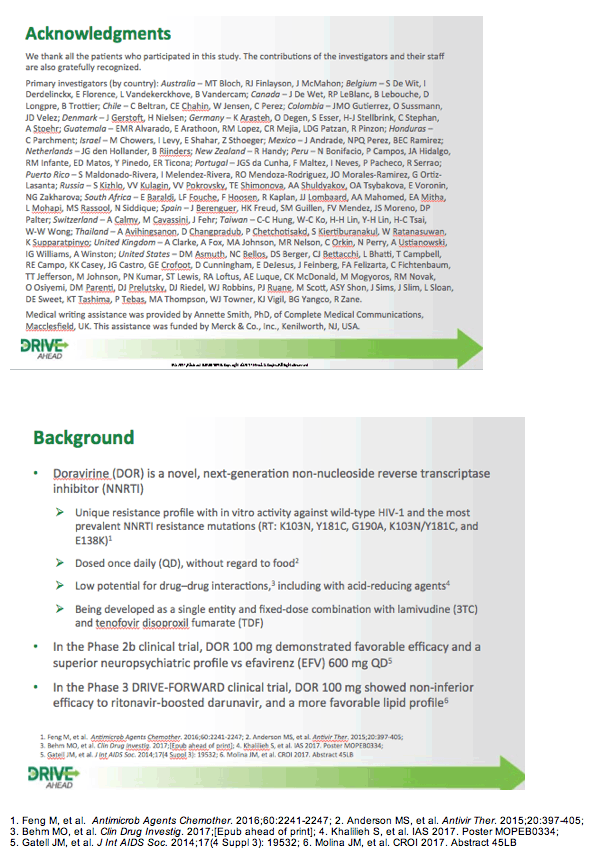
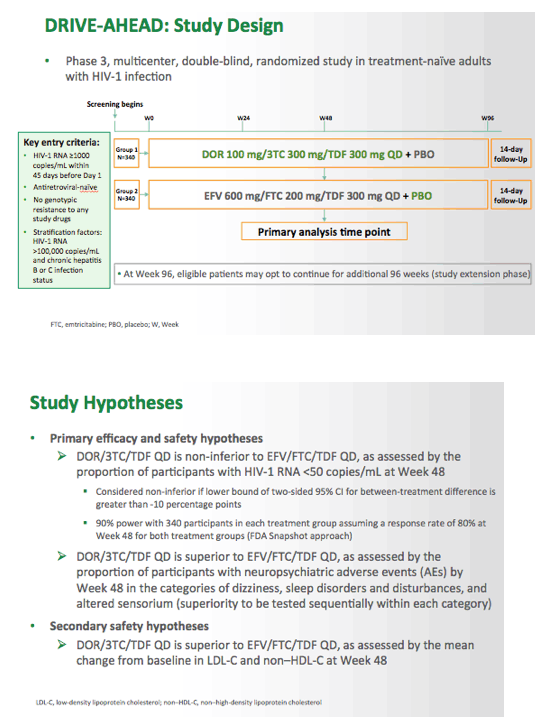
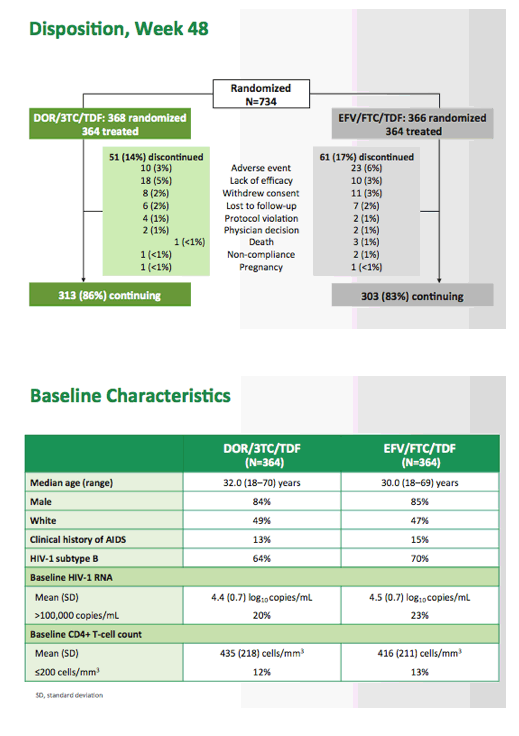
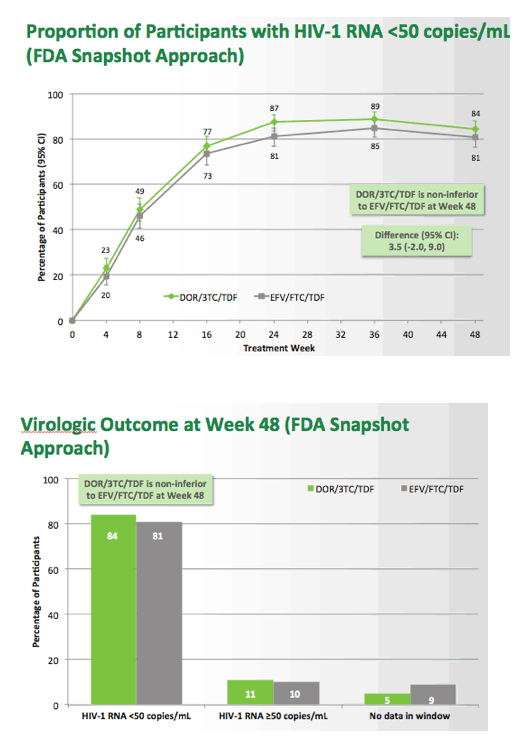
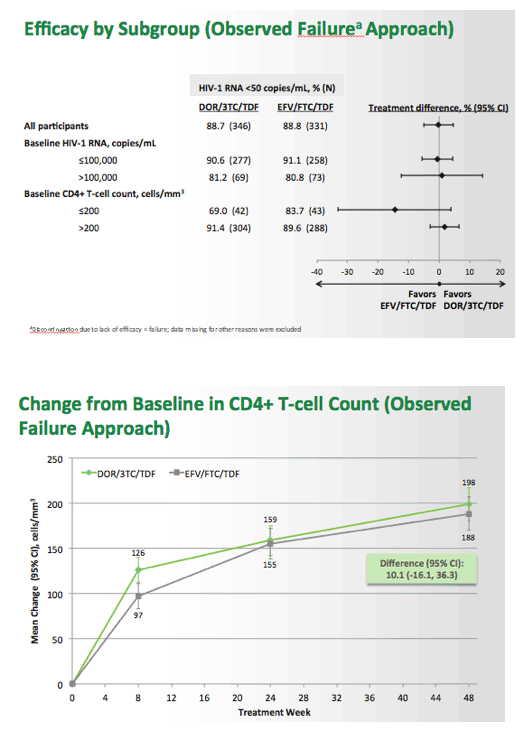
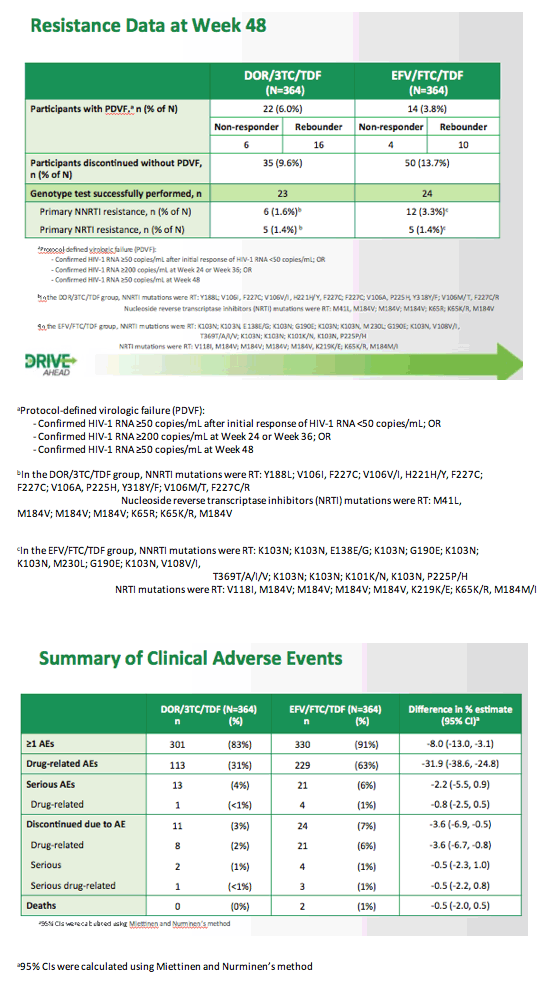
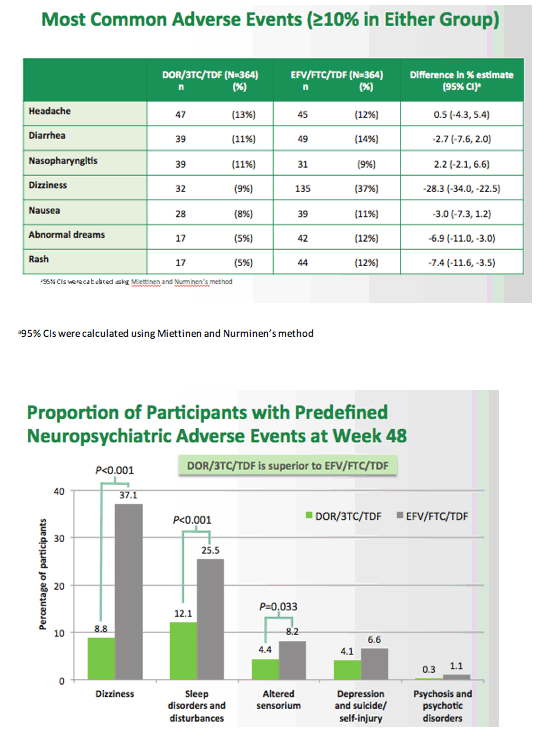
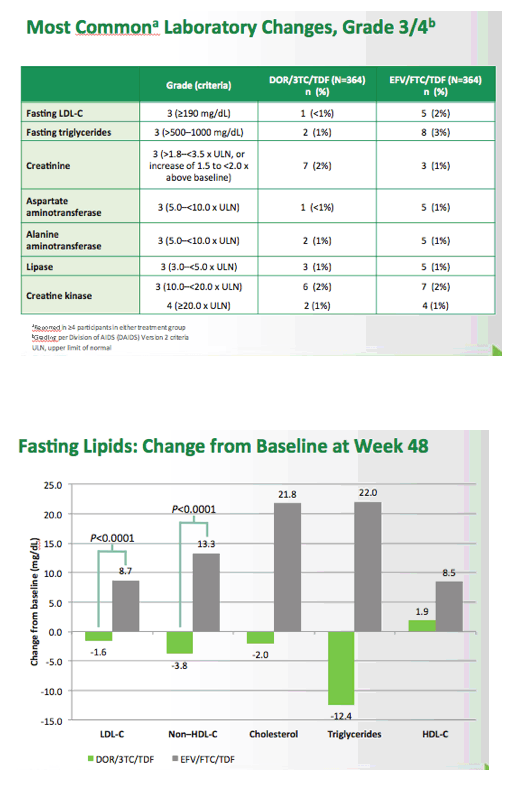
|
| |
|
 |
 |
|
|